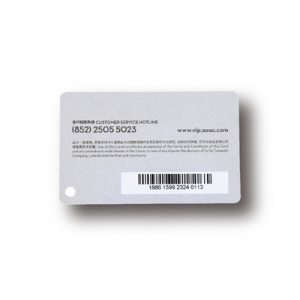Smart card technology continues to evolve, driven by advancements in security, connectivity, and user experience. Here are some future trends in smart card innovation:
- Contactless and Biometric Integration: Smart cards will increasingly integrate contactless technology for faster transactions and biometric authentication for enhanced security. Biometric data such as fingerprints or facial recognition will be stored on the card itself, allowing secure and convenient identity verification.
- Internet of Things (IoT) Integration: Smart cards will play a role in IoT ecosystems by securely authenticating and authorizing interactions between devices and systems, enabling secure communication and data exchange.
- Mobile Wallet Convergence: The line between physical smart cards and mobile wallets will blur further. Smart card functionality will be integrated into mobile devices, allowing users to access their cards digitally and making contactless payments via their smartphones.
- Blockchain Integration: Smart cards can leverage blockchain technology for enhanced security, transparency, and data integrity. This can be particularly valuable in applications like identity verification, supply chain tracking, and secure transactions.
- Dynamic Data Usage: Smart cards will generate dynamic data for each transaction, reducing the risk of data breaches and unauthorized access. This is especially relevant in payment cards to combat card cloning and fraud.
- Green and Sustainable Cards: Environmentally friendly materials and production processes will become more prominent in smart card manufacturing, aligning with global sustainability initiatives.
- Enhanced User Experience: Smart cards will provide improved user experiences through customizable features, interactive displays, and enhanced user interfaces, making them more intuitive and user-friendly.
- AI and Machine Learning Integration: Smart cards can incorporate AI and machine learning algorithms for pattern recognition, fraud detection, and predictive analytics, improving security and personalization.
- Wearable Smart Cards: Smart card technology will be integrated into wearable devices like smartwatches and fitness trackers, allowing users to access various services with a simple tap.
- Edge Computing and Processing: Smart cards with enhanced processing capabilities will perform more complex tasks locally, reducing the need for frequent communication with external systems and improving response times.
- 5G Connectivity: The rollout of 5G networks will enable faster and more reliable communication between smart cards and external systems, facilitating real-time data exchange and updates.
- Health and Wellness Applications: Smart cards will play a role in health monitoring and wellness applications by securely storing medical records, vaccination information, and health-related data.
- Enhanced Security for IoT Devices: Smart cards will be used to secure and authenticate interactions between IoT devices, ensuring that only authorized devices can communicate and access data.
- Decentralized Identity Systems: Smart cards will contribute to decentralized identity systems, giving users more control over their personal data and how it’s shared across different services.
These trends highlight the ongoing evolution of smart card technology, where security, convenience, and innovation continue to drive advancements across various industries and applications.


























